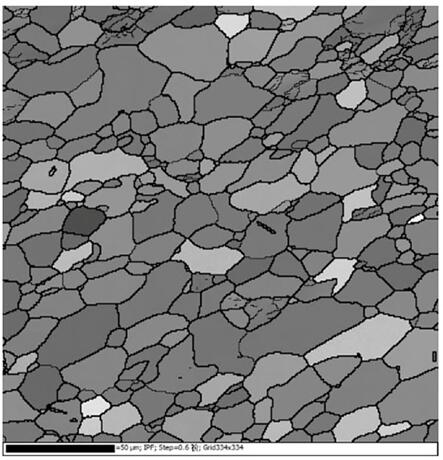A Method for Predicting the Deformation Capability of Metal Materials
A metal material and ability technology, applied in the field of materials, can solve the problems of not being able to predict metal deformation ability well, and achieve the effect of less time-consuming and labor-intensive steps, simple steps, and high prediction accuracy
- Summary
- Abstract
- Description
- Claims
- Application Information
AI Technical Summary
Problems solved by technology
Method used
Image
Examples
Embodiment 1
[0090] The metal material sample to be tested in this embodiment is a rolled AZ31 magnesium alloy plate.
[0091] The grain orientation distribution diagram obtained by calibration in step S1 is shown in figure 2 , it can be seen from the figure that most of the grains in the plate show the same color, that is, the orientation of the internal grains tends to be preferred, which is a typical basal texture orientation phenomenon of magnesium alloys.
[0092] image 3 is the true stress-strain curve of the sample obtained through experiments, where RDT is the tensile true stress-strain curve along the rolling direction, RDC is the compressive true stress-strain curve along the rolling direction, and TDT is the tensile true stress-strain curve along the width direction True stress-strain curve, TDC is the compressive true stress-strain curve along the width direction, and NDC is the compressive true stress-strain curve along the thickness direction; this figure shows that the dena...
PUM
 Login to View More
Login to View More Abstract
Description
Claims
Application Information
 Login to View More
Login to View More - R&D
- Intellectual Property
- Life Sciences
- Materials
- Tech Scout
- Unparalleled Data Quality
- Higher Quality Content
- 60% Fewer Hallucinations
Browse by: Latest US Patents, China's latest patents, Technical Efficacy Thesaurus, Application Domain, Technology Topic, Popular Technical Reports.
© 2025 PatSnap. All rights reserved.Legal|Privacy policy|Modern Slavery Act Transparency Statement|Sitemap|About US| Contact US: help@patsnap.com



